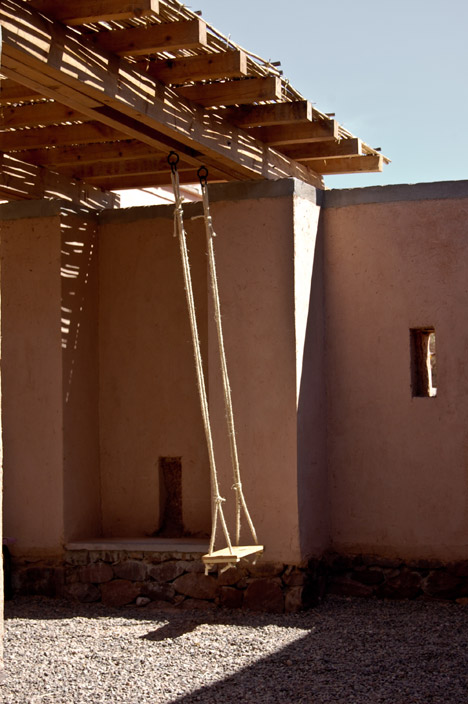Looking for early education environment & architecture inspiration? In this article, we’ll look at this project to see how it aligns with early education philosophy, how the design facilitates learning, the activities that would suit these spaces and we’ll look at how you can use elements of the design as inspiration for your own service.
Preschool Building in Aknaibich, Morocco
Brief Overview of the Project
Contents
Architects Nicolas Coeckelberghs and Dorian Vauzelle Mamoth collaborated with local workers in the Moroccan town of Aknaibich to construct a preschool building using local methods, including adobe brick working. The project was initiated by the GoodPlanet Foundation, aiming to increase the capacity of an existing school and provide a dedicated facility for preschool children. The new classroom building is inspired by the traditional architecture of the old town, which features earthen structures.
Alignment with Montessori, Steiner, or Reggio Principles
While the article does not explicitly mention Montessori, Steiner, or Reggio principles, the design’s emphasis on local materials, community involvement, and the integration of indoor and outdoor spaces aligns with these educational philosophies. These principles prioritize natural materials, community engagement, and a connection to the environment, all of which are evident in the school’s design.
How the Design Facilitates Learning
- Natural Materials: The use of sun-dried adobe bricks, earth, straw, and sand for construction provides a tactile and sensory-rich environment, promoting exploration and curiosity.
- Lighting: The positioning of windows and doors on the north facade allows indirect sunlight to illuminate the interior, creating a warm and inviting learning space.
- Thermal Comfort: A thick south-facing wall with deep openings minimizes solar gain during the day and stores the sun’s heat, releasing it in the evening, ensuring a comfortable learning environment.
- Outdoor Learning: The adjacent play area, protected by a pergola covered with rattan, doubles as an external classroom, promoting outdoor learning and exploration.
How the Design Helps Teachers Create Inspiring Lessons
- Versatility: The design’s integration of indoor and outdoor spaces allows teachers to conduct lessons in various settings, catering to different learning styles.
- Natural Elements: The use of natural materials can inspire lessons around local traditions, construction methods, and sustainability.
- Community Involvement: The school’s construction involved local workers, providing an opportunity for lessons about community engagement and collaboration.
Activities and Lessons Suited for this Space
- Nature Studies: Exploring the properties of the natural materials used in the building.
- Local History and Culture: Learning about traditional Moroccan architecture and construction techniques.
- Science Experiments: Studying the bioclimatic performance of the building, understanding how it maintains temperature and comfort.
- Art and Craft: Using local materials like clay, straw, and rattan for creative projects.
Incorporating Elements of this Design in Other Kindergarten Environments
- Local Materials: Emphasize the use of local and sustainable materials in construction, fostering a connection to the community and environment.
- Community Collaboration: Engage local artisans and workers in the construction or renovation process, promoting community involvement.
- Indoor-Outdoor Integration: Design spaces that seamlessly blend indoor and outdoor environments, providing versatile learning areas.
- Cultural Inspiration: Draw inspiration from local architectural styles and traditions, creating a sense of place and cultural identity.
In conclusion, the preschool building in Aknaibich is a testament to the power of community collaboration, sustainable design, and the integration of traditional and modern construction techniques. Its design not only provides a conducive learning environment but also serves as an inspiration for future educational spaces.
| Location | Morocco |
|---|

